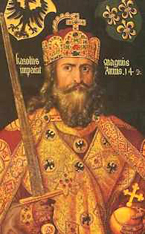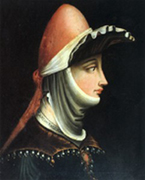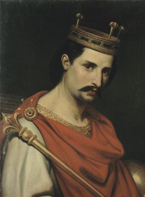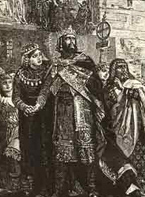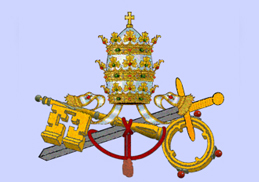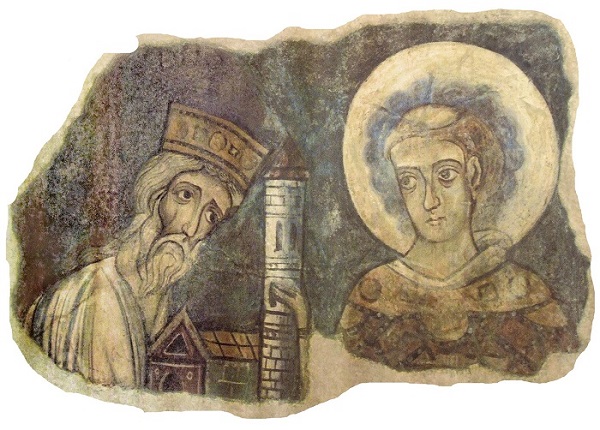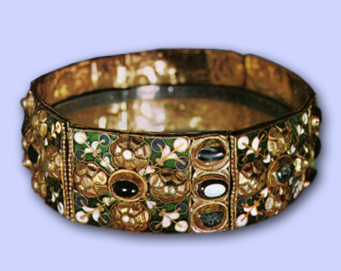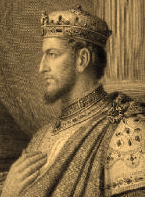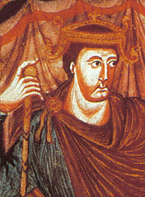|
|
The Imperial Kingdom of Italy was ruled by the Holy Roman Emperor or a member of the Imperial Family from the time of Charlemagne, excepting a brief period in which it was ruled by other houses. Holy Roman Emperor Henry V, King of Italy, crowned Countess Matilda, Margravine of Tuscany as Vice-Queen of Italy, also appointing her Imperial Vicar (representative) in Italy. Since the Italian Crown in the Holy Roman Empire was a personal union with the Empire itself, Matilda's title as the actual ruler of Imperial Italy was Vice-Queen. She died without issue, ceding her territorial rights to the Holy Church. In the first creation of the title of Imperial Vice-King of Italy, during the first period of Carolingian rule of Italy, Bosone I d'Arles, King of Lower Burgundy and Provence was given the title by Charles the Bald, Holy Roman Emperor, King of West Francia, and King of Italy. (From the earliest times, though the Italian Crown was part of the Imperial Patrimony, it was common for the Emperor to use principally the Germanic/Frankish title, with Italian rule at times left to a crowned Vice-King.) Willa of Provence, daughter of Bosone, married Hugh d'Arles, King of Italy. His son, Ludovico, became King of Provence, King of Italy, and Holy Roman Emperor. Another example comes during the time of Arnulf, Ludovico's predecessor as King of Italy and Holy Roman Emperor. Arnulf crowned his illegitimate, yet recognised son, Ratold, as Vice-King of Italy. After the reunion of the Italian crown with the Holy Roman Emperor, the style of Vice-King fell out of use until its second creation for Matilda, Margravine of Tuscany.
During the Napoleonic Empire, Napoleon was crowned King of Italy with the Iron Crown, following the traditions of the Holy Roman Emperors. Similarly, Italy was specifically ruled by a Vice-King, Prince Eugène Rose de Beauharnais, Duke of Leuchtenberg, adopted son of Napoléon I. The title of Viceroy later in history is derived from the French form of Vice-King, Vice-Roi. Such Viceroys were/are representatives of the Sovereign of a particular territory, with varying degrees of authority. Typically they rule a country on behalf of the monarch. Historical examples include the Viceroys of the various Spanish territories around the world — a famous example being Christopher Columbus. Modern examples include the Governor-General of Canada and the Governor-General of Australia. Today, His Holiness the Bishop of Rome-Ruthenia holds the title of Imperial Lord of Italy as the ecclesiastical successor of the Roman Empire and the ancient Margraviate of Tuscany in the Holy Roman Empire, and in descent from the ancient Margraves of Tuscany and Kings of Italy in the Holy Roman Empire. The Grand Prince of Etruria holds the titles of Vice-King of Italy and Imperial Vice-Chancellor of Italy in the Holy Roman Empire.
CRONISTA RE D'ARMI ITALIANO IMPERIALE -- IMPERIAL ITALIAN CHRONICLER KING OF ARMS Pontifical Imperial State of Rome-Ruthenia
|
|
